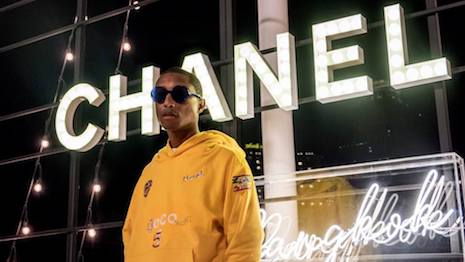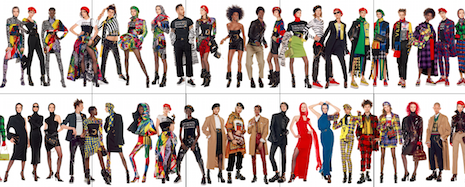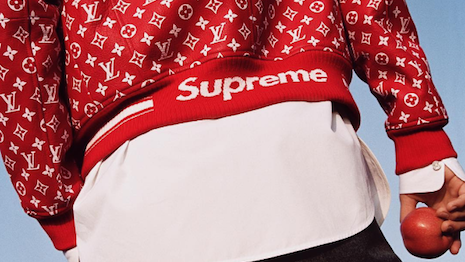 Pharrell Williams at Chanel's Bangkok show. Image credit: Chanel
Pharrell Williams at Chanel's Bangkok show. Image credit: Chanel
With luxury groups continuing to consolidate, brands can draw in younger affluents by differentiating themselves through inclusivity, creativity and sustainability.
According to Coresight Research’s Luxury Differentiation report, consumers have high expectations for how luxury brands should approach social responsibility. While major luxury players have been raising their own sustainability standards, resale and consignment platforms are also making a strong impact.
“Many luxury brands are adapting to the high velocity retail environment with rapidly changing consumer demands, expectations and new norms, while holding onto brand codes and rituals that are the core essence of the brand identity.,” said Marie Driscoll, managing director for luxury and fashion at Coresight Research.
“Digitalization has leveled the luxury marketplace and once-exclusive brands with very limited distribution can now be easily found online,” she said. “This is just one of the factors pushing change in luxury: greater access is also pushing brands toward greater inclusivity.”
Creative inclusivity
Luxury brands must balance their efforts for greater inclusivity – in terms of gender, race and size – with elements of exclusivity.
Online retailers such as Farfetch are exposing more consumers to luxury goods, which in turn is encouraging labels to consider expanding their size options.

The Versace fall/winter 2018 campaign featured a diverse group of models. Image credit: Versace
A 2018 luxury report from Bain & Co showed that inclusive fashion, either curvy or plus-size, represented approximately 20 percent of luxury ready-to-wear.
More advertising campaigns from luxury brands and retailers also feature celebrities or models with a range of ethnicities and ages.
For its fall/winter 2018 effort, Italian fashion brand Versace showed a lineup of 54 models wearing looks from the collection. The massive lineup of models – men and women in all shapes and backgrounds – symbolized the label’s commitment to diversity (see story).
With younger consumers becoming more accepting of gender fluidity, luxury labels are also introducing unisex products that go beyond fragrances.
French fashion label Chanel has been increasingly dabbling in menswear, despite its history as a women’s wear brand.
In 2017, Chanel took a rebellious stance on gender norms by selecting music producer Pharrell Williams as the face of its then-new Gabrielle handbag style (see story). More recently, Chanel introduced its Boy de Chanel makeup collection that includes foundation, a brow pencil and lip balm for men or gender fluid individuals (see story).
Louis Vuitton x Supreme collection. Image credit: Louis Vuitton
Collaborations between brands or brands and individuals, such as the case with Chanel and Pharrell, can also incentivize new consumers to purchase luxury goods.
Especially when traditional luxury brands partner with streetwear labels, both brands can benefit by combining marketing efforts and expanding customer bases. Other notable collaborations for true-luxury buyers include Louis Vuitton and Supreme, Adidas and Yeezy and Fendi and Fila (see story).
Sustainability investments
Younger consumers are also especially concerned about sustainability and fashion. According to ThredUp, nearly three-quarters of 18-29 year olds prefer to buy from sustainably conscious brands.
In light of the rapid growth of the high-end consignment market, retailers Farfetch and Neiman Marcus Group are experimenting with trade-in programs. Farfetch Second Life accepts lightly used handbags in exchange for store credit, enabling customers to both give their unwanted goods a longer lifespan and invest in more fashion (see story).
Luxury consumers are also becoming more aware of brands’ sustainability efforts.
More than seven in 10 luxury consumers believe that luxury brands should be exemplary in terms of sustainability, according to the Luxury Research Journal. The National Chamber of Italian Fashion also found that a quarter of consumers have discontinued purchasing from a brand due to sustainability concerns.
As a result, luxury brands are being more vocal about their environmental efforts.
French luxury conglomerate Kering has ramped up its own sustainability efforts in recent years, with an emphasis on improving its supply chain. This month Kering introduced new open-source animal welfare standards, which cover all of the species that are included throughout its supply chain (see story).
Earlier this year, LVMH also introduced new requirements for its crocodilian leather sourcing, as the group continues its quest to be more transparent about animal welfare and other sustainability issues. LVMH plans to have all the farms supplying its exotic leather tannery certified by its new standards by 2020 (see story).
“Shoppers increasingly expect brands to be environmentally friendly – and luxury is no exception,” Coresight Research’s Ms. Driscoll said. “Changing consumer preferences have actively inspired brands to re-examine their sustainability profiles – and in many cases take steps to enhance their positions.”
